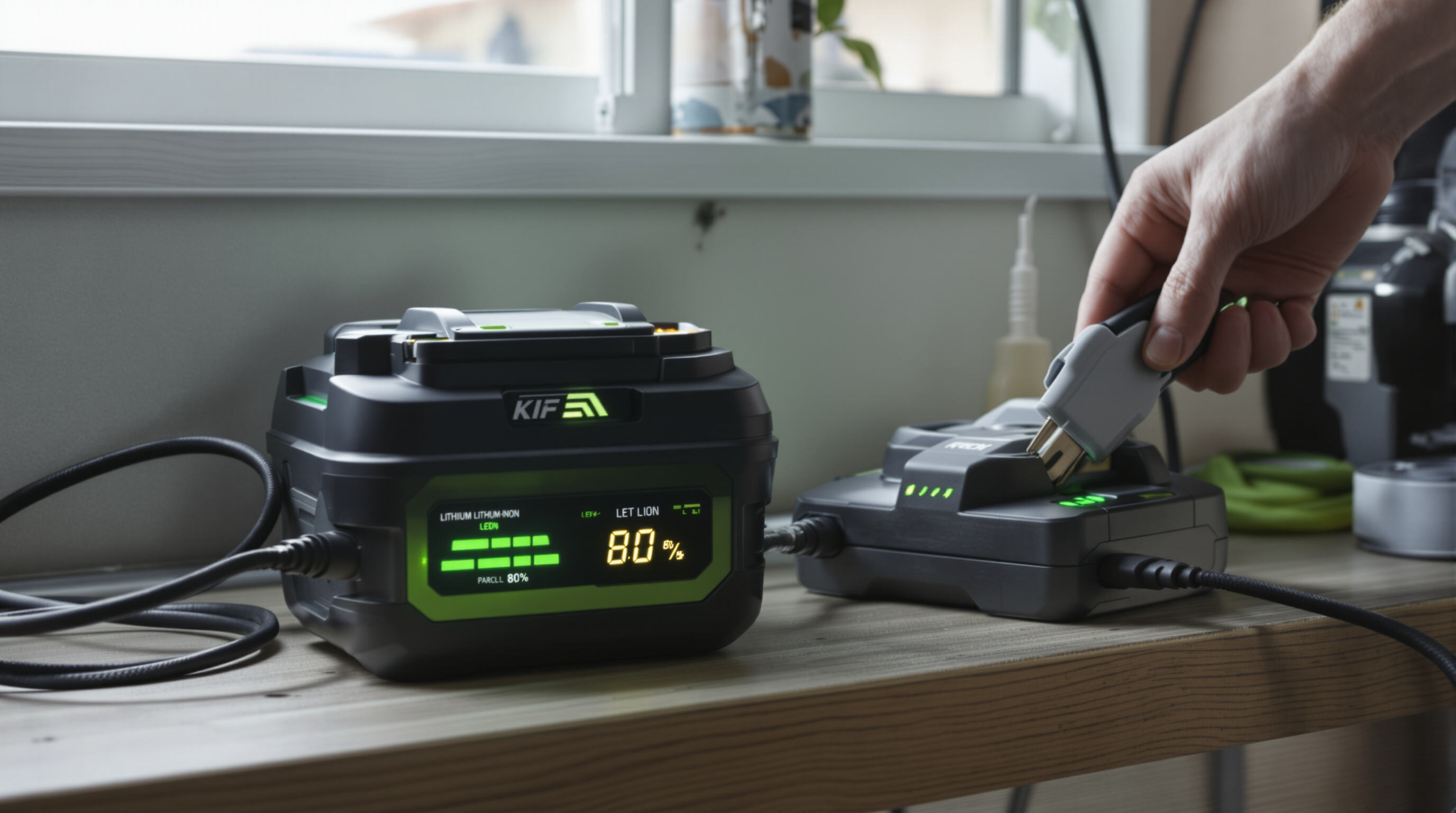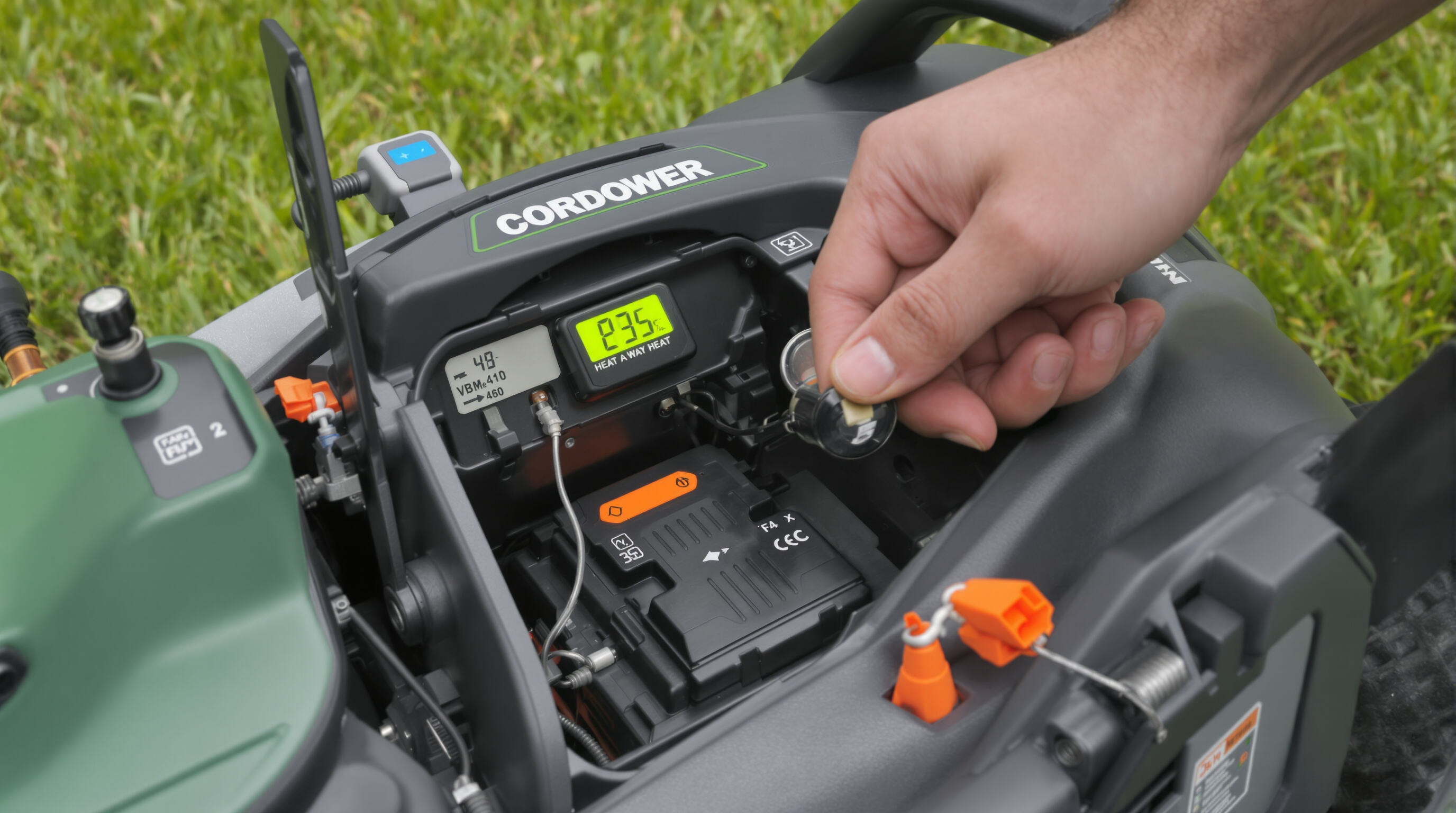How Lithium-Ion Lawn Mower Technology Impacts Cordless Mower Performance
How Lithium-Ion Technology Powers Modern Cordless Mowers
The switch to lithium ion batteries has completely changed what cordless lawn mowers can do. These new batteries pack three times as much energy as the old nickel based ones we used before, and they weigh about 40 percent less according to recent industry reports from 2024. What does this mean for actual performance? Modern mowers now run around an hour longer than those early electric models. Plus there's this amazing fast charging feature most people don't even realize exists. Many units can get to 90 percent charge within half an hour these days because manufacturers have made improvements in how the battery cells work plus added better temperature control systems inside the packs themselves.
The Relationship Between Charge Level Bandwidth and Battery Degradation
Operating batteries within a 20–80% charge range reduces cathode stress by 58% compared to full 0–100% cycles (Electrochemical Society 2023). Sustained exposure to extreme charge levels accelerates capacity fade:
- Above 90%: Electrolyte oxidation increases, causing 1.2% monthly capacity loss
- Below 15%: Copper anode dissolution occurs, leading to 0.8% monthly degradation
Maintaining moderate charge levels significantly slows long-term wear.
Depth of Discharge and Its Impact on Cycle Life
Partial discharges dramatically extend battery lifespan:
| Depth of Discharge (DoD) | Average Cycle Life | Capacity Retention at 500 Cycles |
|---|---|---|
| 30% | 1,500 | 91% |
| 50% | 1,200 | 86% |
| 100% | 500 | 72% |
Limiting discharge to 50% triples service life compared to full discharges while preserving 95% of initial torque output.
Partial Charging vs. Full Discharging: Best Practices for Longevity
Recharge when battery levels reach 30% during use and disconnect at 80–85% for storage. This method reduces lithium plating by 73% versus full charging cycles. Modern battery management systems (BMS) support longevity through:
- Voltage modulation (optimal range: 3.6V–4.1V per cell)
- Temperature-compensated charging rates
- Cell balancing within 0.02V variance
Avoid deep discharges except for quarterly calibration to maintain accurate charge metering.
Optimal Charging Habits to Extend Lithium-Ion Lawn Mower Battery Lifespan

Charging between 20% and 80% to Maximize Battery Lifespan
Operating within a 20–80% charge window minimizes stress on cathode materials and slows capacity loss. Research from the 2024 Battery Aging Report shows this practice can extend cycle life by up to 300% compared to full discharges. For lawn mower users, the benefits are clear:
| Charging Pattern | Average Cycle Life | Capacity Retention After 2 Years |
|---|---|---|
| Full (0–100%) | 500 cycles | 65% |
| Partial (20–80%) | 1,500 cycles | 85% |
This approach mitigates lithium plating and electrolyte oxidation, two major contributors to battery degradation.
Avoiding Overcharge and Deep Discharge in Daily Use
Leaving batteries plugged in after reaching full charge triggers micro-cycling that accelerates wear, while discharging below 10% strains internal chemistry. A 2023 study found that 0–100% cycling degrades total energy capacity 2.5– faster than partial charging. To protect battery health, recharge when one indicator bar remains (~20%) and unplug once the charger reaches 80%.
Effects of High Charge Voltage on Long-Term Battery Health
Charging beyond the standard 4.2V per cell creates thermal stress that damages electrodes. Testing indicates each 0.1V overvoltage reduces battery lifespan by 15–20%. While quality mower batteries include voltage regulators, using non-certified chargers may bypass these protections, increasing failure risk.
Using Balanced Charging and Built-In Battery Management Systems (BMS)
Advanced BMS technology monitors individual cell voltages and redistributes energy to prevent imbalance. During charging, these systems:
- Balance cells within 0.05V
- Reduce charge current above 113°F (45°C)
- Automatically disconnect at full charge
This ensures uniform wear and prevents localized overcharging.
Why Manufacturer-Recommended Chargers Ensure Safety and Efficiency
OEM chargers deliver precise voltage profiles matched to battery specifications. Third-party alternatives often use generic settings that overstress cells, increasing failure risk by 43% according to safety testing. Always use the original charger to maintain warranty coverage and ensure optimal performance.
Managing Temperature for Safe and Efficient Lithium-Ion Battery Operation

Impact of Temperature on Lithium-Ion Battery Aging
High temperatures double battery degradation rates above 45°C compared to room temperature, accelerating electrolyte breakdown by 35% (Electrochemical Society 2023). Charging below 0°C risks irreversible lithium plating. Storing batteries at 30°C for six months results in 15% greater capacity loss than at 20°C, underscoring the importance of thermal control.
Best Practices for Charging at Room Temperature
Charge batteries in environments between 15°C and 25°C to optimize ionic conductivity and minimize internal stress. Avoid direct sunlight during charging, as brief exposures above 40°C can damage anode materials. If the battery is warm after use, allow a 30-minute cooldown before connecting to the charger.
Monitoring Battery Temperature During Mowing to Prevent Overheating
Mowers equipped with BMS automatically reduce power when internal temperatures exceed 50°C. Users should periodically check the battery casing during extended use—if too hot to touch comfortably (≈55°C)—stop operation immediately to prevent accelerated aging.
Avoiding High Discharge Rates Under Extreme Heat or Heavy Loads
In temperatures above 90°F, heat from heavy grass cutting can push batteries beyond safe limits. To mitigate risk:
- Reduce mowing area by 25% per charge
- Use slower blade speeds
- Clear motor vents before starting
These steps prevent voltage sag and avoid cumulative damage equivalent to 50 full cycles (Battery University 2022).
Recognizing Battery Degradation and Performing Preventive Maintenance
Proactive monitoring can delay capacity loss by up to 40% compared to reactive maintenance (Ponemon 2023). Early detection allows timely adjustments before performance declines become critical.
Signs Your Lithium-Ion Lawn Mower Battery Is Degrading
- Runtime reduction: Requiring multiple charges for areas previously covered on one
- Charging anomalies: Taking 25–30% longer to charge than when new
- Heat concerns: Battery warmth during light use or idle periods
- Voltage instability: Mower stalling under load despite >30% charge
Routine Maintenance Tips to Preserve Battery Performance
Monthly cleaning of electrical contacts with isopropyl alcohol helps stop resistance from building up over time. When storing equipment during the off season, keep batteries at around 30 to 50 percent charge level in a dry location where temperatures stay between 60 and 75 degrees Fahrenheit. Prolonged exposure to either direct sunlight or freezing weather should be avoided whenever possible since these extremes can damage components. Stick to chargers recommended by the manufacturer for best results because they regulate voltage correctly. The field has seen some exciting developments lately with predictive maintenance technologies that allow for smarter monitoring via built-in battery management systems, which ultimately makes everything last longer and perform better in the long run.
FAQ
What are the benefits of using a lithium-ion battery in cordless mowers?
Lithium-ion batteries offer enhanced capacity and reduced weight compared to nickel-based predecessors, resulting in longer mower operation times and faster charging capabilities.
How can I maximize battery lifespan in my cordless mower?
To extend battery life, maintain a 20–80% charge range, avoid deep discharges, use manufacturer-recommended chargers, and store batteries in a controlled environment.
Why is it important to manage battery temperature?
Controlling battery temperature prevents accelerated degradation, ensuring longevity and optimal performance, especially during charging and discharging processes.
Table of Contents
- How Lithium-Ion Lawn Mower Technology Impacts Cordless Mower Performance
-
Optimal Charging Habits to Extend Lithium-Ion Lawn Mower Battery Lifespan
- Charging between 20% and 80% to Maximize Battery Lifespan
- Avoiding Overcharge and Deep Discharge in Daily Use
- Effects of High Charge Voltage on Long-Term Battery Health
- Using Balanced Charging and Built-In Battery Management Systems (BMS)
- Why Manufacturer-Recommended Chargers Ensure Safety and Efficiency
- Managing Temperature for Safe and Efficient Lithium-Ion Battery Operation
- Recognizing Battery Degradation and Performing Preventive Maintenance
- FAQ

